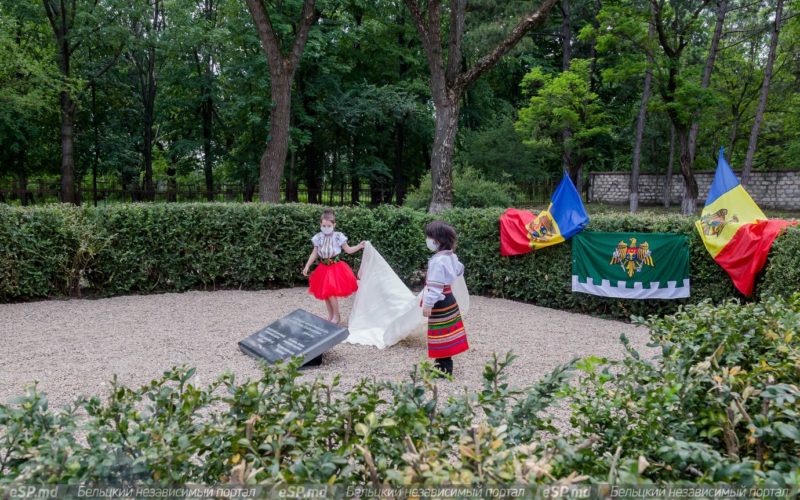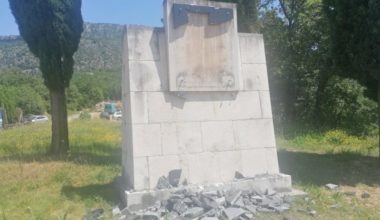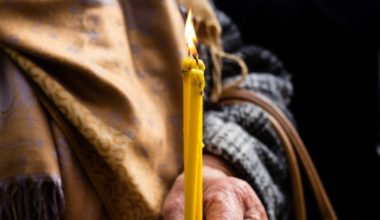On June 10, 2020, a foundation stone ceremony took place in Bălți, Moldova marking the start of construction works for the new monument that will be dedicated “to border guards of all generations”. The idea of the monument belongs to the Moldovan Frontier Guard Association. The structure is planned to be erected in a public garden neighboring the Selecția town park. The local authorities gave their permission for the foundation stone ceremony, in which Vice Mayor Nicolai Grigorishin and MP Vladimir Vitiuc representing the Republican Socio-Political Movement Equality (Şor) took part.
“For me, it is a great honor and joy to be part of today’s event. All the people in uniform here fully deserve the moment and the monument. As old soldiers have said here, army service was once a matter of honor, border guards being the army’s elite. I discharge my debt of gratitude to those who safeguarded our frontiers in the past, and do it today. First of all, I would like to wish them health and happiness to their families. Personally, I am ready to join and take part in all the work regarding the monument that lies ahead, including construction work,” Vladimir Vitiuc said.
From 1940 till 1941, the commanding staff of the 24th NKVD boarder guard formation, headed by Major Ivan Solovyev, was garrisoned in Bălți. From June 22 till July 2, 1941, the units of the formation knocked out over 3,000 Romanian soldiers, downed one plane, destroyed two artillery weapons and 43 machine guns, and drowned 123 assault boats.
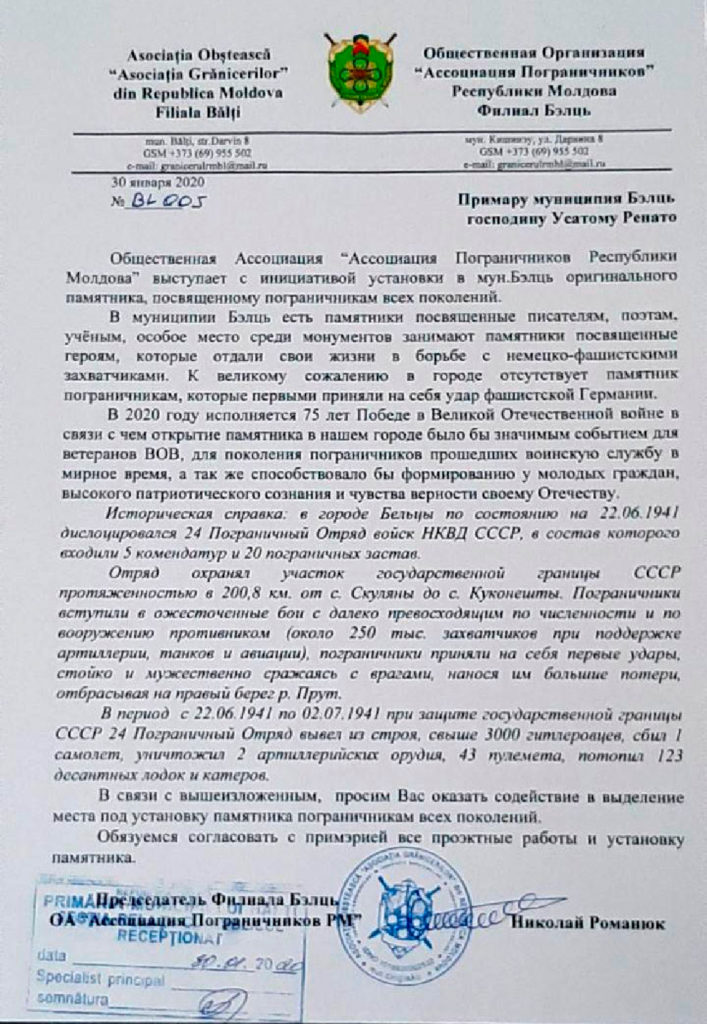
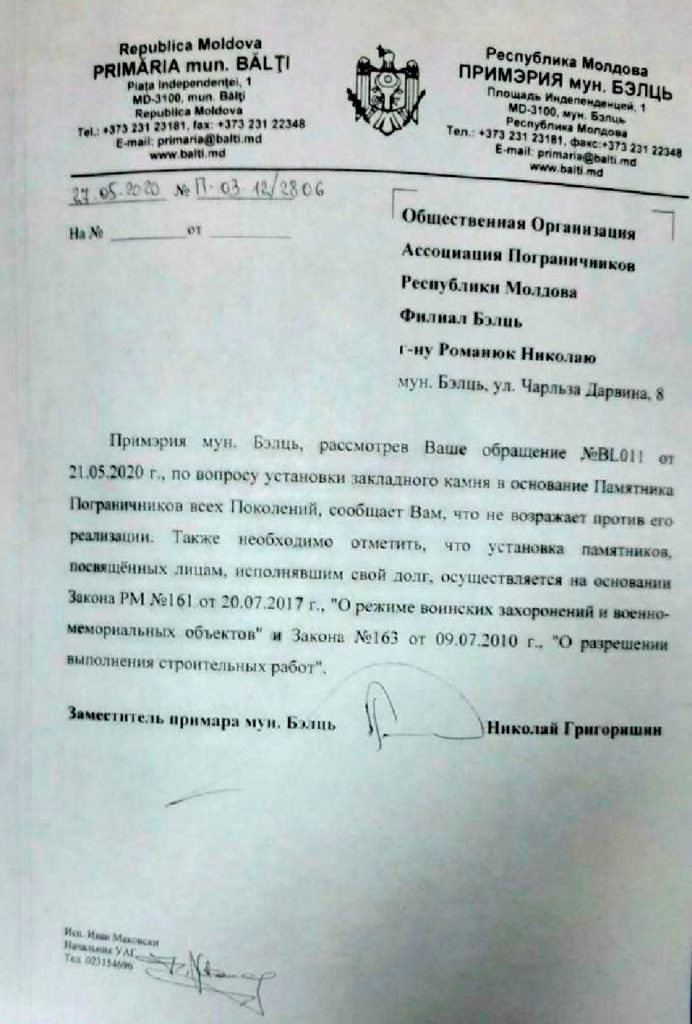
The intention to commemorate the boarder guards in Bălți was met with active opposition of unionist forces, aiming at the unification of the Republic of Modova with Romania. Some members of the political movement were present at the foundation stone ceremony, carrying posters reading “No NKVD monuments in Bălți” and “We want public consultations.” The local far-right saw “a Soviet trail” in the attempt to commemorate the border guards of all generations.
Earlier, Sergiu Burlacu, leader of the local National Unity Party branch, tried to challenge the initiative during a session of the town council. He declared that the construction of such monument was a “humiliation of our nation” which Romania would view as an “unfriendly move”.
Boarder guard veterans do not support such an interpretation, saying that the monument will be a symbol of unity and the succession of military traditions from those who served in the border guard forces in the past to modern-day border police of Moldova.
“The foundation stone for the future monument has been laid. We have great concern at the fact that someone is trying to misrepresent our intentions, full of patriotism and aimed at strengthening the morale of our border guard brotherhood – not to say that the monument is being constructed at private expense, not at the expense of the state budget. We are ready to go through all the formalities and open for co-operation with the local authorities,” said Oleg Fedko, chairman of the Moldovan Frontier Guard Association. He stressed that members of the National Unity Party made statements aimed at misrepresenting the importance and moral significance of the initiative regarding the erection of the monument.
Serguei Nazarenco, head of the Cadet Brotherhood, a non-governmental organization, said that his NGO also supports the initiative regarding the monument construction. According to him, people who try to associate it with NKVD troops fail to understand the meaning of the term. “The abbreviation ‘NKVD’ stands for the People’s Commissariat for Internal Affairs, which is now Ministry of Internal Affairs with, more or less, the same set of functions. If you oppose the NKVD today, you also oppose present-era law enforcement structures that safeguard our nation,” Nazarenco explained.
Earlier, a similar monument to border guards was erected in Comrat, the capital of the Gagauz Autonomy.
